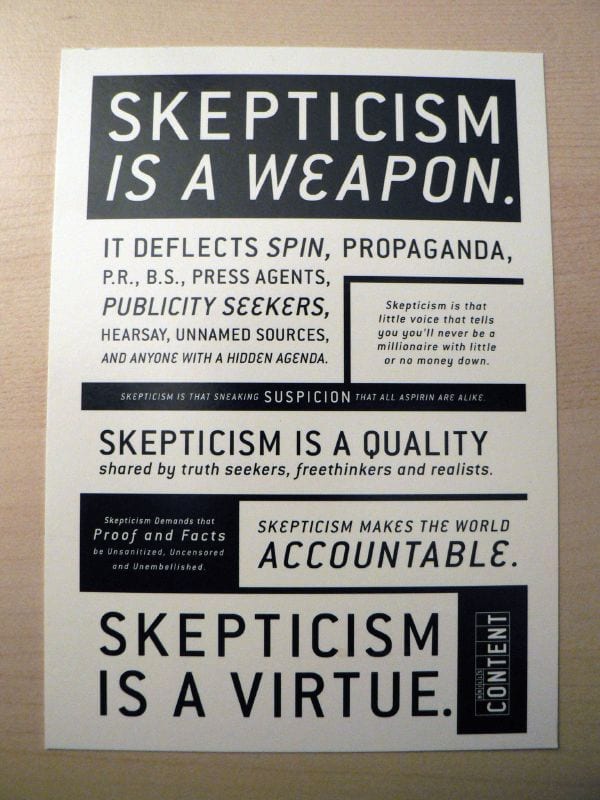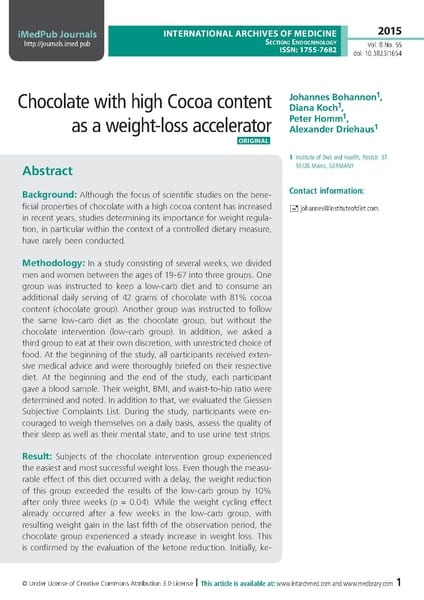Don't Believe Everything You Read: The Importance of Statistics Education
Did you know that approximately 73.6% of statistics are made up on the spot? Now, I don't actually know the true percentage, but this common phrase conveys the idea that at least some statistics are made up. Often times, reported statistics are incorrect or not credible. Yet numerous media outlets report on studies that are full of statistical mistakes. Some famous examples include Dr. Andrew Wakefield's claims that vaccines cause autism, Newsweek's claim that college educated women over 40 are more likely to be killed by a terrorist than getting married, and the widely held belief that we only use 10% of our brains.

So why is there so much confusion? The answer is obvious: a lack of statistics education. In my first statistics class, my professor told us that we should be healthy skeptics when reading articles that make bold claims using “statistical evidenceâ€. I was shocked to hear this, as I had always held the belief that media outlets would never report anything without meticulously analyzing the accuracy of their findings. But this naive thinking leads to a misinformed general public. The media is constantly trying to promote stories that sell, so some of these outlandish claims slip through the cracks.
A classic example: In 2015, several media outlets reported that eating chocolate helps you lose weight. Now if this seems way too good to be true, that's because it is. Dr. John Bohannon, a biologist and science journalist at Harvard University, published an intentionally flawed study claiming that eating chocolate helps you lose weight, all in an effort to prove bad science can end up making headlines. Even though the study used real data collected from real people, the study was designed to make the results meaningless.
Not only was the study poorly designed, but it was published in a “pay to play†scientific journal, which Bohannon revealed will publish bad science for a fee. Now the real part of the problem is that many media sources didn't bother to investigate these claims, and many of them wouldn't have been able to spot the flaws in the study anyways.

Despite this, the problem could still be solved if we just had a more statistically literate population. This starts by promoting statistics education in the classroom. The mathematics curriculum that we currently have in the U.S. is based on a foundation of arithmetic and algebra, and everything we learn is building up towards one subject: calculus.
In 2012, College Board reported that 282,398 students had taken an AP Calculus exam while in high school, compared to only 129,403 taking an AP Statistics exam. This is due to the fact that calculus is seen as a more advanced math, and therefore “looks better†when applying to colleges. However, a study by Dr. Michael Handel at Northeastern University, showed that only 8% of people use calculus in their jobs. While the study also shows only 11% of people using statistics in the workplace, data is constantly being shoved in our faces by the media and advertisements, and without a working knowledge of statistics, many will fall prey to misleading statistics.

As society continually progresses towards a world overloaded with information, statistics is one of the most important subjects one can learn. As I've mentioned, many news sources are full of statistical data, and anyone who is ignorant of statistics is at risk of being misled about important life decisions. Not only that, but statistics are also used by politicians and advertisers to distort the truth for their personal gain. For example, you may have seen the claim that 4 out of 5 dentists recommend Colgate toothpaste. Guess what, that’s not true either.
Essentially, there is no study with scientific, social, environmental, or political findings that doesn't use statistical methodologies. Now, I don't expect an educational statistics revolution to occur overnight, so click here for a few tips on how to avoid being fooled by the abuse on statistics now. I don't know about you, but I'd hate to be the one falling for the next big media mistake.
Feature Image Credit: Sean MacEntee via Flikr
 Jonathan Waring is an Athens native and an undergraduate student studying Computer Science at the University of Georgia. When he's not watching Netflix in his room, he can be found watching Netflix in his friends' rooms. He aspires to pursue an advanced degree in Medical Informatics and to one day work on disease tracking software at the CDC. As a reminder he is just one person: not statistically significant nor representative. You can email him at jwaring8@uga.edu or follow him on Twitter @waringclothes. More from Jonathan Waring. Jonathan Waring is an Athens native and an undergraduate student studying Computer Science at the University of Georgia. When he's not watching Netflix in his room, he can be found watching Netflix in his friends' rooms. He aspires to pursue an advanced degree in Medical Informatics and to one day work on disease tracking software at the CDC. As a reminder he is just one person: not statistically significant nor representative. You can email him at jwaring8@uga.edu or follow him on Twitter @waringclothes. More from Jonathan Waring. |
About the Author
-
athenssciencecafehttps://athensscienceobserver.com/author/athenssciencecafe/April 17, 2020
-
athenssciencecafehttps://athensscienceobserver.com/author/athenssciencecafe/April 12, 2020
-
athenssciencecafehttps://athensscienceobserver.com/author/athenssciencecafe/April 3, 2020
-
athenssciencecafehttps://athensscienceobserver.com/author/athenssciencecafe/March 30, 2020







